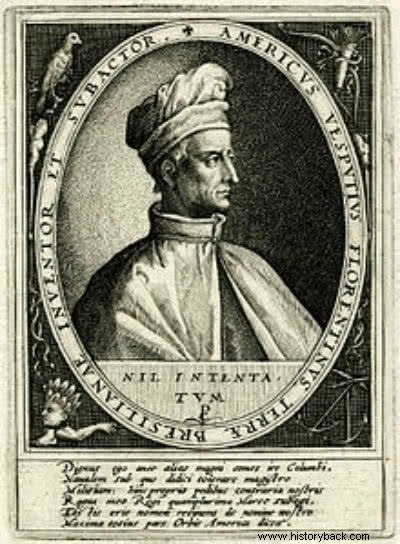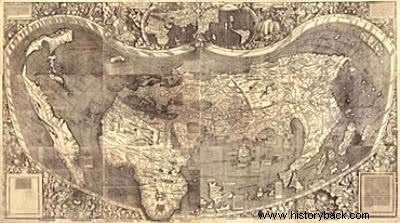Amerigo Vespucci was a Florentine navigator, cartographer, writer and merchant.
He participated three times in maritime expeditions. Due to his descriptions of the new land, the American continent was named in his honor.

Amerigo Vespucci portrayed as discoverer and conqueror of the land of Brazil. 17th century.
Biography
Amerigo Vespucci was born in 1454 in the city of Florence, Italy, to an affluent family that could finance his studies. However, only when he was introduced to Astronomy and Mathematics did he show a real interest in the sciences. Then he took a job at Lorenzo Medici's bank and participated in a diplomatic trip to France accompanying a family member.
In 1490, however, he went to Seville, a city that was teeming with economic possibilities because of the imminent voyage that Columbus would make. When the navigator returned, both met and Americo would help Christopher Columbus plan his second and third expeditions.
Likewise, Amerigo Vespucci traveled through the Indies - as the new land was called - on three occasions. The first with Spaniards and the last two, under the command of Portuguese captains.
In 1505 he returned to Spain and was appointed chief pilot of the Casa de Hiring in the Indies. In this role he was responsible for providing technical assistance and maps to the pilots who embarked, as well as reporting on these trips to the government.
He died in 1512 and was buried in Seville.
Voyages of Amerigo Vespucci
The first voyage of Amerigo Vespucci took place in 1499 with Alonso de Ojeda – who had participated in expeditions with Columbus. He invested his savings in this endeavor, but he didn't make any profit.
After this experience, Vespucci leaves Spain for Portugal. It is unknown if he comes to Lisbon as a spy for the Crown of Castile or if he just wanted to continue his travels across the seas. Thus, Américo Vespucio embarks in 1501 and 1503 in Portuguese fleets that take him to the south of the continent.
In these two voyages, Amerigo Vespucci has the opportunity to verify that those lands were a continent and not an island as Columbus claimed.
It is also a witness to the discovery of Rio de Janeiro, because on January 1st, in the fleet commanded by Gaspar de Lemos, a bay was found and the Portuguese classified it as the mouth of a large river and named it Rio de Janeiro.
Learn more about Portuguese Navigations.
Why is America called America?
In 1503 he sends a letter to his former boss Lorenzo de Medici and uses the expression “New World” to refer to the new continent.
During the voyages of 1501 and 1503 he wrote a 32-page account describing the people and lands. An Italian publisher included his description in a publication entitled “The New World and the New Lands Discovered by Amerigo Vespucci”. The book was a publishing success and ran for 32 editions.
However, it was the cartographer Martin Waldseemüller who adopted the feminine name of America when making a world map in 1507. The German cartographer made this decision after reading the writings of Amerigo Vespucci. The feminine was chosen because the other continental portions were also called like this:Europe, Asia and Africa.

Martin Waldseemüller's map where you can see America from North to South.
During later centuries, the figure of Vespucci was taken to be that of a usurper, as the glory of the discovery of the new continent was supposed to be Columbus. However, it is necessary to consider that Columbus thought that that portion of land was the final part of Asia. In no time he realized that he was in a different place and died believing that it was a part of the Asian continent.
In turn, in his travels to the south of the continent, observing the vegetation, the size of the land and the population, Vespucci realized that those lands had no relationship with Asia.
Despite this, neither Amerigo Vespucci nor the Florentines occupied the land that was found. Therefore, the merit of the discovery went to whoever occupied and populated the new continent.
See also:Discovery of America